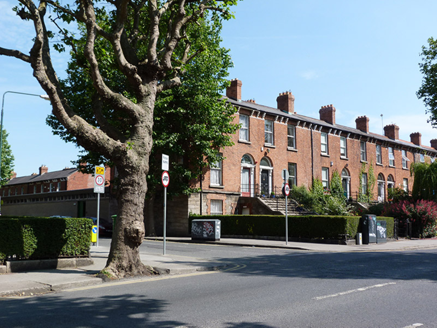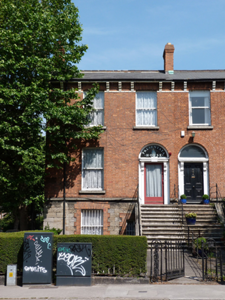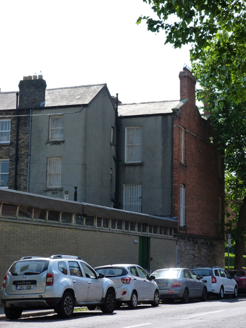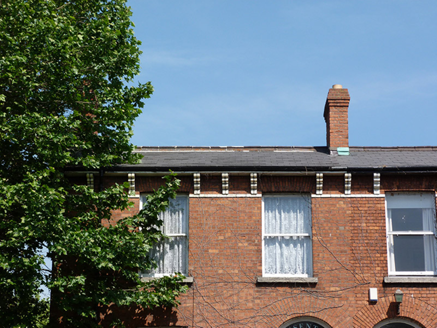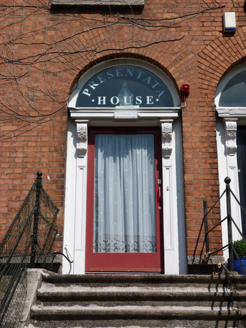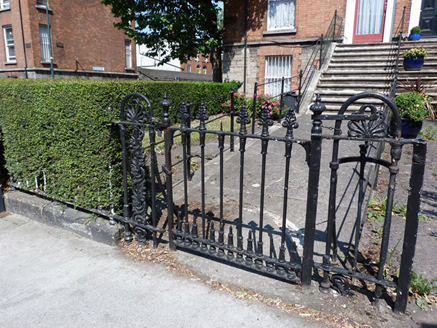Survey Data
Reg No
50130323
Rating
Regional
Categories of Special Interest
Architectural, Artistic
Previous Name
Charleville Terrace
Original Use
House
In Use As
Office
Date
1875 - 1895
Coordinates
314457, 235677
Date Recorded
24/10/2018
Date Updated
--/--/--
Description
Corner-sited end-of-terrace two-bay two-storey former house over raised basement, built c. 1885 as one of terrace of ten, having full-height return and single-storey extension to rear (north) elevation. Now in use as religious centre. M-profile pitched roof having granite barges to west end, red brick chimneystacks to east and west ends and to return with clay pots, profiled metal gutter supported on bracketed yellow brick eaves course over yellow brick course. Red brick walling laid in Flemish bond over granite plinth course and snecked limestone walls to basement to front and gable elevations; rendered walls to rear; yellow brick walls to extension, laid in stretcher bond. Square-headed window openings, having red brick block-and-start surrounds to basement openings, with granite sills and one-over-one pane timber sliding sash windows. Round-headed doorway having carved timber doorcase comprising panelled pilasters with foliate brackets, supporting moulded timber cornice and plain fanlight, replacement glazed timber door, approached by flight of eleven nosed granite steps and granite platform shared with house to east, having wrought-iron handrail on granite plinth to west and mild steel handrail to east. Square-headed doorway to basement. Cast-iron railings on cut granite plinth to boundary to front and west, having cast-iron pedestrian gate with ornate piers.
Appraisal
This well-built house terminates a terrace of ten late nineteenth-century houses with similar parapet heights and fenestration patterns. The combination of snecked Calp limestone and red brick adds visual and textural interest to the facade. The corbelled brick detailing to the eaves places the house in a late nineteenth-century context. The North Circular Road was laid out in the 1780s to create a convenient approach to the city. It developed slowly over the following century with little development west of Phibsborough till the 1870s. The terrace was named 'Charleville Terrace' for Charleville House in Wicklow the home of Charles Monck, who was the landowner responsible for development along this stretch of North Circular Road.
